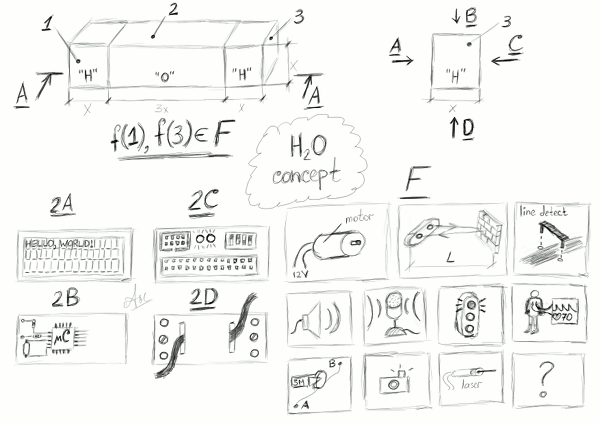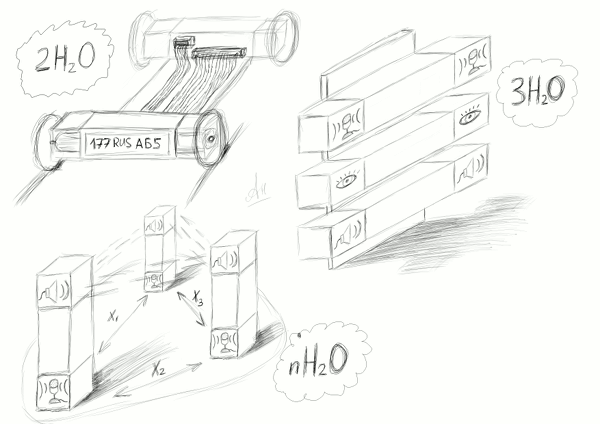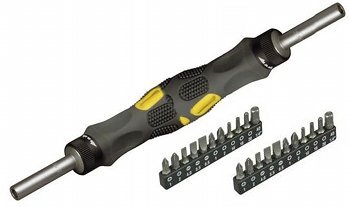![[logo.png]](%2bdownload/logo.png)
The idea for the final project should include possibility to use most of those technologies discussed in class. Though it is known to be solid truth that a final project is usually different from the first concept, I was trying to find the form which could let me be more creative throughout the course and at the same time to not change the basic ideas for the project - rather add new interesting parts to it.
So I stick to the concept of an electronic construction set which I present with a number of following pictures.
The full set could be though of as based on and at the same time represented by some sort of matter. This matter could take forms of "molecules", which are composed of "atoms". As in real life molecules could be connected to each other to start a new formation and function.
Water is the most known and important substance on Earth. I decided to start the set of possible molecules with a similar configuration, trusting Nature in finding the best and simplest basic combination able to support life on our planet.

In the picture one can see the main molecule, composed of 3 atoms and having a formation of H-O-H (1-2-3 respectively in the picture). The picture tends to explain itself though some remarks are needed, of course.
First of all the "O" atom is described from 4 different sides (2A, 2B, 2C, 2D). It has a monitor to display text on A-side, micro-controller board on B-side, physical interface connectors for electronics on C-side, mechanical installation board on D-side.
Possible functions of H-atoms (functions are represented by f(1), f(3) in the picture) are gathered in an "F" set. The functions in this set are presented as small pictures: motor actuating, distance measurement, line detection, audio reproduction (speaker), audio saving (microphone), indication, heart rate monitoring, odometer, image capturing, laser pointing…
As in real life any atom has a limited number of connections: H has 1, O has 2. It is also worth noting that some connections might not be possible: for example, H-H connection won't work. For a molecule to work it should include a uAtom. uAtoms are able to process connections and usually have more than 1 connections available (they are "heavy"). In our example O is a uAtom, having a micro-controller (uC).
Molecules also can be connected to each other to actually implement the needed form or complex function.

A 2-molecule example is a toy-car. A 3-molecule example is a robot-face with "ears", "eyes" and "mouth". Some formations could benefit from an unlimited number of molecules: the picture also shows a network of n molecules able to measure distance between each other in a beacon style.
The last example also reveals a possible problem of our atom representation. H-atoms in one H-O-H molecule do not necessarily carry the same function. This, in turn, means that one H-atom could differ from the other in terms of function. So in order to avoid misunderstanding - atom and molecule analogy is limited to the form of our set (physical dimensions of atoms), it does not care about the function.
To make the last idea more clear, one could think of an H-O-H molecule as a very strange screwdriver with a lot of changeable bits. The strange part is that bits could be installed from both ends of the screwdriver.

As bits are restricted only in mechanical interface any bit that fits could be used independently.
